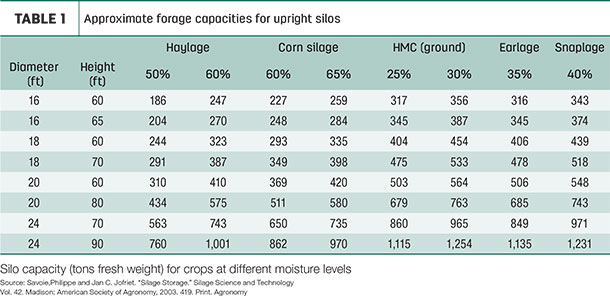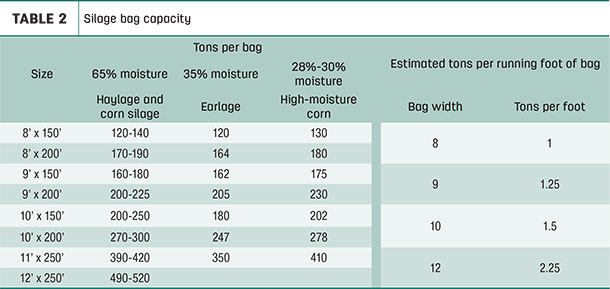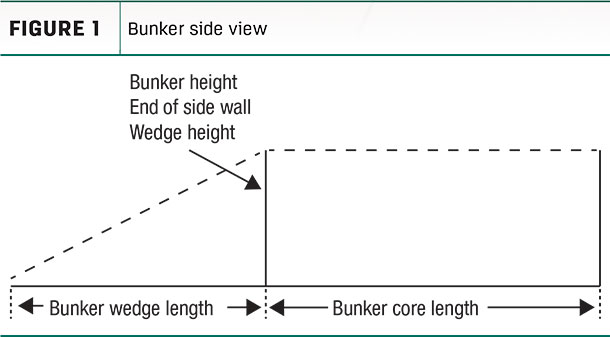For all businesses, inventory is a crucial part of the day-to-day and year-to-year operations. Without product to sell – or worse yet, parts or ingredients to make salable items – a company cannot survive.
Livestock agriculture is no different and, in fact, should be even more inventory-conscious than some sectors, as many of our feedstuffs are harvested once a year and are used over the course of 12 to 15 months. Thanks to modern technologies and transportation, we have made significant advancements in storing these perishable feeds.
Just as in other industries, agriculture-related businesses need to count, record and monitor their inventory throughout the year. Doing so multiple times throughout the year will protect your farm business from being short or long on feed inventory, which can be costly to replace. This is also a good time to check and monitor the quality of your grain and silages.
Specific to many livestock farms is the harvest and monitoring of forage inventory. Many livestock owners take their inventory for granted, as they tend to harvest the same amount of acres year after year for the same number of animals and hope they have enough feed to last them until the next growing season. However, growing seasons, yields and the number of animals tend to fluctuate, so feed and forage inventory should be conducted periodically (e.g., two or three times a year). There is no hard-and-fast “right” time to do an inventory audit, but here are a few common examples of when you might consider measuring your current forage and inventory:
-
October-December: By now, harvest is complete. Identify the type, quality and tonnage of your new feedstuffs and determine where they might best be utilized in the coming months, as well as the level at which these forages can be fed in the ration to last until the next harvest season. At this point, you can start to budget your needs for any purchased feed. This is also a good time to label all of your forage inventory and the types of feed stored on the farm, if that has not already been done.
-
February-March: Reevaluating your forage inventory and monthly usage during this time ensures that your initial inventory and usage were accurate in the fall. Utilizing the silage density measurement (i.e., pound per cubic foot) is a well-known way to calculate inventory and will help ensure greater accuracy as you determine the total tons available going forward. Additionally, spring calculation can reveal any adjustments that might be necessary to avoid emergency feed purchases later.
- July-August: This is the last evaluation before the fall harvest – one last chance to adjust your harvest plans and really dial in on the feed intakes that will be required to get you through the harvest. Remember, corn silage starch is not completely available for digestion for two to four months after harvest, as fermentation is still working to break down these digestive barriers.
Time is always at a premium on the farm, so it can be hard to find time to account for the feeds you have on hand. As such, scheduling it on the calendar will help you make time and leaves one less task for you to try to remember among your many other duties. Taking inventory of forage can be daunting, but with a few resources, it is possible to accomplish. There is a different method for calculating the contents of the structure of each storage type. Silos are the oldest method of forage preservation, and many companies and universities have made the approximate capacities easy to determine in user-friendly charts like Table 1.

Silage bags have been increasing in popularity over the years and can be a great alternative to more permanent storage structures. Silage bags come in many different sizes and provide an excellent opportunity to maintain separation between hay crops, with easy identification. These silage bags can be placed anywhere and have a smaller feeding face, making harvest and feeding very flexible. Much like silos, forage bags are predictable, making it fairly simple to estimate the amount of feed they can hold. Charts for forage bags (Table 2) estimate the capacities of each bag at a standard density, while many on-farm calculations will determine the approximate tonnage per foot and multiply that number by the length of the bag.

Forage stored in horizontal structures – like bags, bunkers and piles – have taken the place of vertical storage in many regions. The need for larger quantities of silages have led to the creation of large spans of concrete and asphalt that house mountainous piles of feed made to last beyond a year. Taking inventory of bunkers and piles requires the development of a series of rectangles and triangles to determine the cubic feet (Figure 1).

The sidewalls on a bunker make calculations simpler than for a pile, which is not very symmetrical. Inventory, regardless of the storage unit, is very dependent on the density of the pack, and the density of the pack fluctuates depending on the type of crop, the moisture level and the height of the storage container.
Getty Images.

-
Ben Jensen
- Forage Treatment and Calf/Heifer Specialist
- Hubbard Feeds
- Email Ben Jensen











